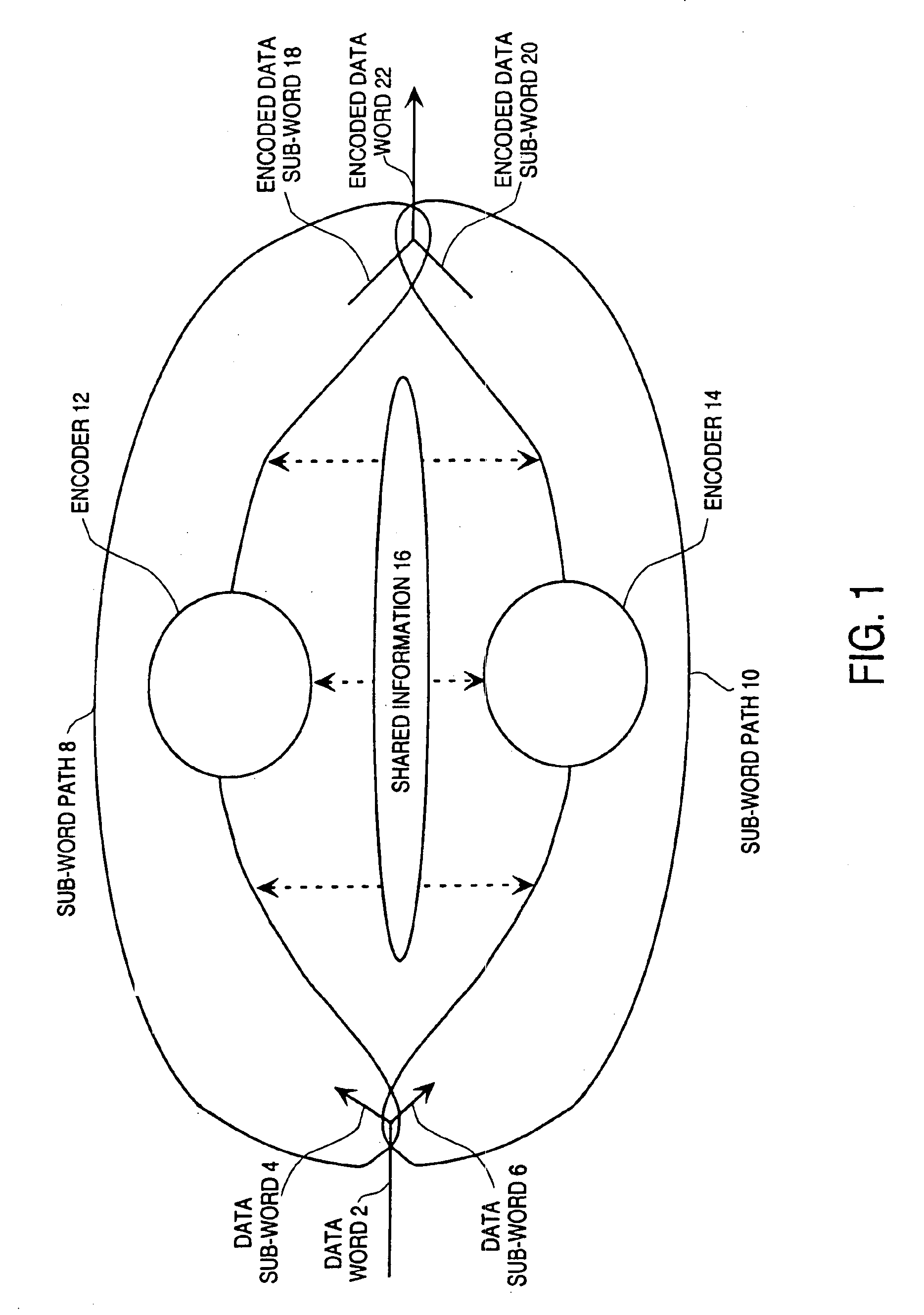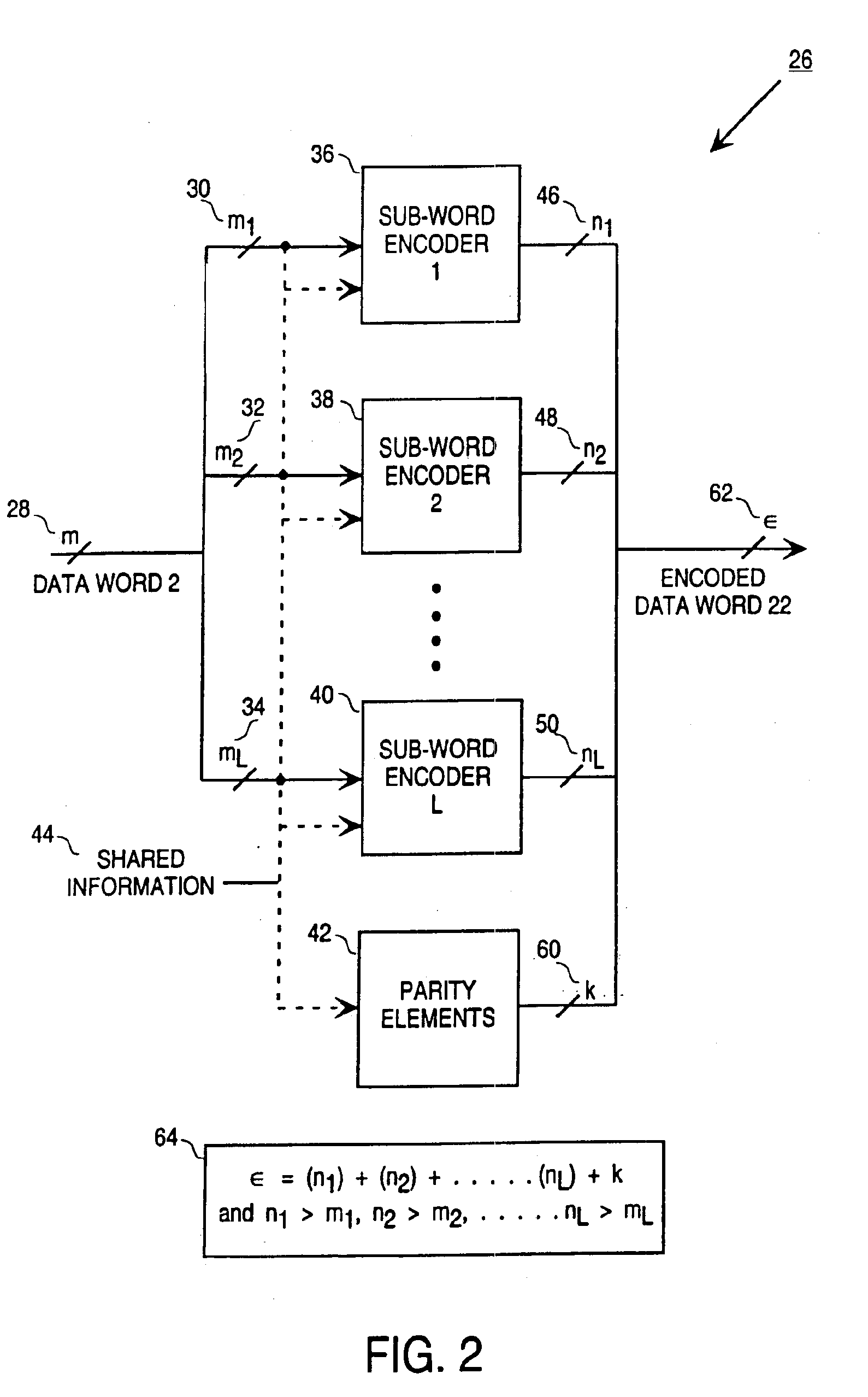Methods and apparatus for constant-weight encoding and decoding
a constant-weight encoding and decoding technology, applied in the field of information transmission systems, can solve problems such as timing losses, interconnection circuit problems, and compromise the integrity of output signals, and achieve the effect of low latency
- Summary
- Abstract
- Description
- Claims
- Application Information
AI Technical Summary
Benefits of technology
Problems solved by technology
Method used
Image
Examples
Embodiment Construction
FIG. 1 depicts multiple sub-word paths and information sharing between sub-word paths, along with input data word to encoded data word flow. With reference to FIG. 1, data word 2 is split into data sub-word 4 and data sub-word 6. Data sub-word 4 travels along sub-word path 8 and data sub-word 6 travels along sub-word path 10. Encoder 12 is connected with sub-word path 8 and encodes data sub-word 4. Encoder 14 is connected with sub-word path 10 and encodes data sub-word 6. It will be appreciated that many alternatives are possible, for example, encoder 12 could be comprised of a plurality of encoders or encoder 12 and encoder 14 could be a single encoder connected with both sub-word path 8 and sub-word path 10. A plurality of encoders in contact with a sub-word path could encode the sub-word in parallel.
Shared information 16 allows information to be shared between sub-word paths. Shared information 16 can occur anywhere along the sub-word paths. For example, shared information 16 cou...
PUM
 Login to View More
Login to View More Abstract
Description
Claims
Application Information
 Login to View More
Login to View More - R&D
- Intellectual Property
- Life Sciences
- Materials
- Tech Scout
- Unparalleled Data Quality
- Higher Quality Content
- 60% Fewer Hallucinations
Browse by: Latest US Patents, China's latest patents, Technical Efficacy Thesaurus, Application Domain, Technology Topic, Popular Technical Reports.
© 2025 PatSnap. All rights reserved.Legal|Privacy policy|Modern Slavery Act Transparency Statement|Sitemap|About US| Contact US: help@patsnap.com



